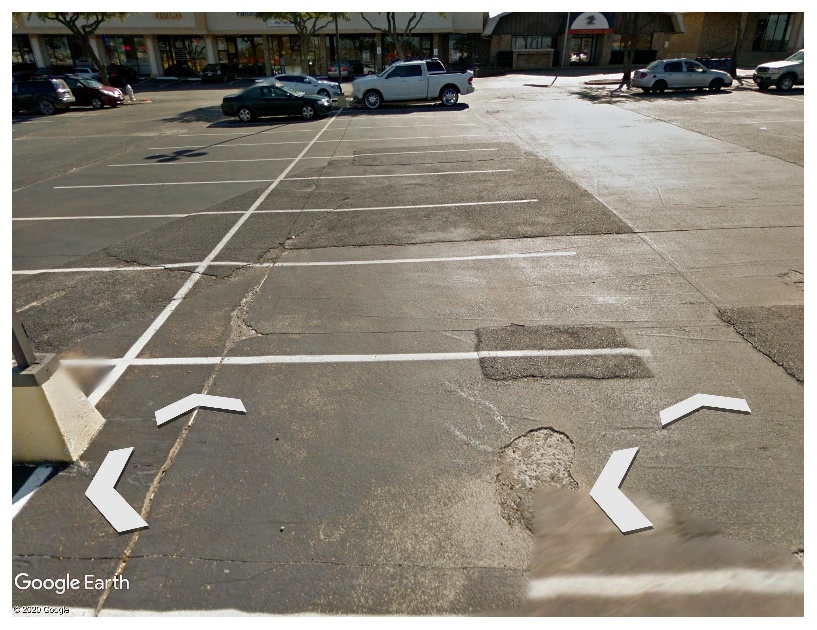
In the previous post, we discussion pavements have high initial construction cost and ongoing routine maintenance costs. At the end of the pavement’s performance life there will be a resurfacing or replacement cost. The in between cost, maintenance costs, can vary depend on the technique selected. An objective pavement distress identification method is beneficial to this end. Identifying pavement distress types is key to selecting the most appropriate maintenance or rehabilitation technique. A correctly identified distress will have a specific cause which can be correlated to a specific repair.
The above photograph is a good example of misapplied maintenance to pavement distress. This PCC pavement has a surface scaling problem (see what appears to be a shallow pothole by the right arrow) and a poorly constructed pavement patching. The patching repairs are thin asphalt concrete overlays of individual pavement slabs and an asphalt cement spray seal coat. The seal coat may have been an attempt to waterproof the pavement surface but is clearly ineffective. The result is an uneven pavement surface which is continuing to deteriorate. Either replacing the PCC pavement or placing a thicker asphalt concrete overlay over the entire parking lot are better options.
For the above situation, maintenance timing would be to maximize the usefulness of the current surface before replacing or resurfacing. In other cases, the timing will be when to crack seal, patch or replace PCC slabs. To slow aging effects, early maintenance application, such as, a silicone water sealant, will have more effect to extend pavement performance life.
Photograph from Google Earth